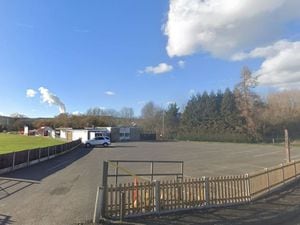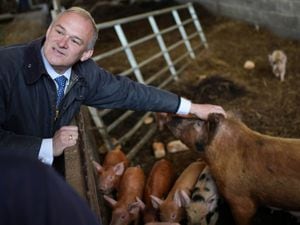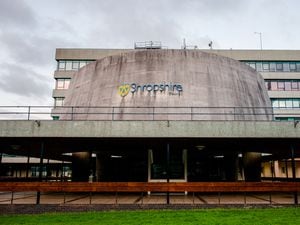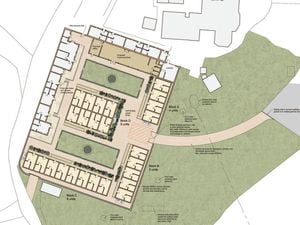Footballing son of Oswestry who lifted Everton FC to greatness is remembered with first headstone
A son of Oswestry who became the first footballer to sign for Everton FC has been honoured at a special commemorative event in Liverpool.

George Farmer died at the age of 42 but until Saturday his grave at Anfield Cemetery did not have a headstone to mark the spot of this Shropshire sporting legend.
Everton FC's Heritage Society says that without George Farmer the Toffees may not have become the football force that he did.
Now his grave is proudly marked with a headstone as he takes his spot among the greats at the Premier League side.
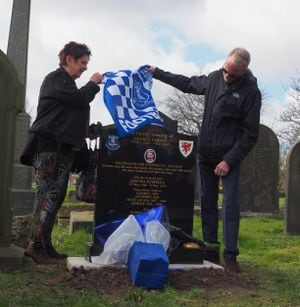
Jamie Yates of Everton FC Heritage Society, who researched the story of George Farmer and directed the project, said: "Without the philanthropy of Everton Football Club and the local community around Liverpool and beyond upon the death of George Farmer in May 1905, it is not unreasonable to assume that his widow and eight young children would not have survived the poverty-stricken future they were facing.
"Without George Farmer capturing the imagination of thousands of Evertonians – not to mention the thousands who went along to watch football for the first time in that era with no idea that they would leave Anfield as newly converted Evertonians – Everton Football Club might well never have made it to the level of Football League founder members.
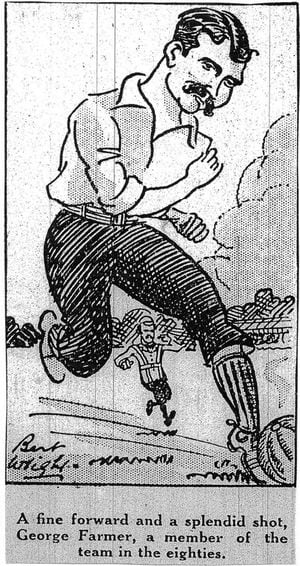
"Farmer’s story serves as a reminder of where we came from, why it means so much, and always has. He was the archetype for every great Everton hero who followed."
Jack Wildman grew up in Everton, and was a playing founder member of the St Domingo’s Church football team in 1878. Late in his life he wrote to the Liverpool Echo in 1925: "I think the first import was George Dobson from Bolton, then George Farmer from Oswestry, and I think if there is to be a monument or a tablet fixed on Everton’s ground, George Farmer’s name should be in the centre.
"Farmer was the man that made the people come and take notice. We never looked back after he came."
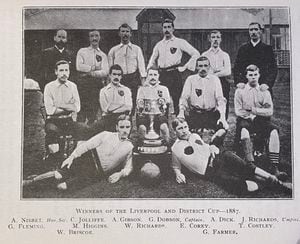
George Farmer was Everton’s first professional ‘signing,’ alongside George Dobson, at the dawn of professionalism. He was the first international footballer to play for Everton (for Wales, just prior to joining Everton).
He created two goals for George Fleming on Everton’s Football League debut.
In various reports George Farmer was said to be a "left-footed, screw-kicking artist, and the veritable idol of the old Everton supporters".

He was considered the finest inside-left that some had ever seen.
George Farmer started his footballing odyssey with the White Star team of his hometown, Oswestry. Nicknamed ‘The Skinners’, tradesmen of that epithet made up the White Star’s number.
Farmer trained as a skinner and worked as a leather dresser or finisher for much of his adult life, alongside his footballing exploits.
In early 1883, the White Star club combined playing resources with Oswestry Football Club, and it was with this team that Farmer first came to Everton’s attention, playing against them in successive fixtures home and away, across a fortnight in March 1883, scoring in a 5-2 win for the home team at Oswestry. The next step for Farmer was a big one; onto the international stage.
Farmer played twice for Wales, at Blackburn versus England, and at Wrexham versus Scotland, alongside his future Everton teammate and fellow professional, striker Job Wilding of Wrexham Olympic.
Farmer would only make ten appearances in the second season of League football, before appearing to fall out with the Everton directors, earning a reprimand from club president John Houlding and ultimately being suspended and banished to the junior teams for several months.
Thereafter, he moved to West Manchester, a side pushing to make a name for themselves, in the days before United and City had blossomed from Newton Heath and Ardwick.
His cause of death, on May 4 of 1905 at the family home of 123 Belmont Street in Everton, was pericarditis, or damage to the lining of the heart, almost certainly caused by a childhood bout of rheumatic fever or similar.
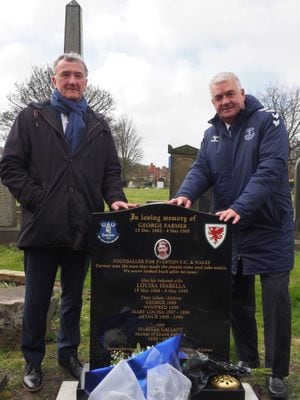
Distraught, and just two weeks after George’s funeral at Anfield Cemetery, his widow Louisa gave birth to her twelfth child, a baby boy she called Arthur. Alas, baby Arthur would also succumb just a year or so later.
The local community rallied around the Farmer family quickly.
A ‘Benefit Fund Committee’ was established by the Everton directors, and the gate receipts from an Everton reserve team match versus Stockport County reserves in October 1905 was set aside for the family. Legendary future Everton trainer Harry Cooke played for Everton in this fixture, a 3-2 win for the Everton side, and £33. 5s. 8d. was raised. This, combined with Everton’s original £10 donation, would be the equivalent of around £6,000 in modern terms.
With the money, his widow Louisa invested in number 36 Oakfield Road, from where she ran a tobacconist’s shop.
Within a few years she had sold the business, and found work as a stewardess on the White Star Line out of Liverpool. George might have smiled at the idea of his wife joining the White Star Line all those years after he made his name with the White Stars football team in Oswestry.
At the outbreak of the Great War, Louisa was working aboard the Arabic when it was torpedoed by a German U-boat. Fortunately, she was among the survivors, and returned home, where her and son Edward established successful fish and chip shops in Liverpool and Heswall. A watch from Louisa’s service with the White Star Line is still in the possession of one of her great granddaughters in Liverpool.
Read more about the story of George Farmer on the Everton FC Heritage Society website.

